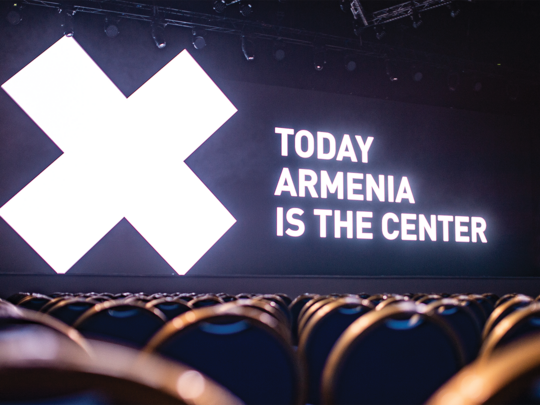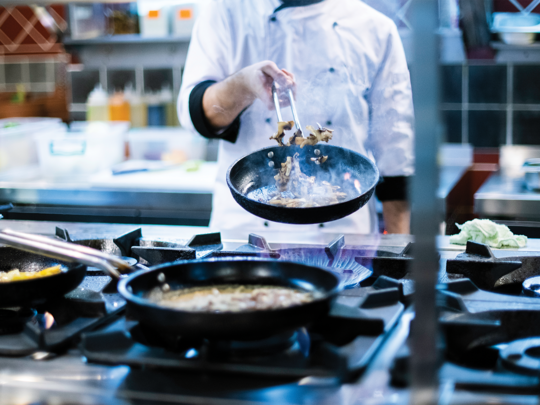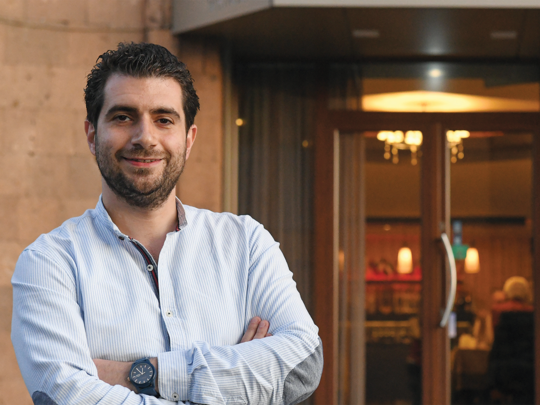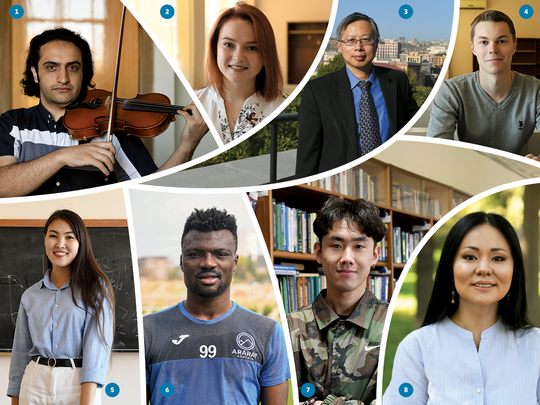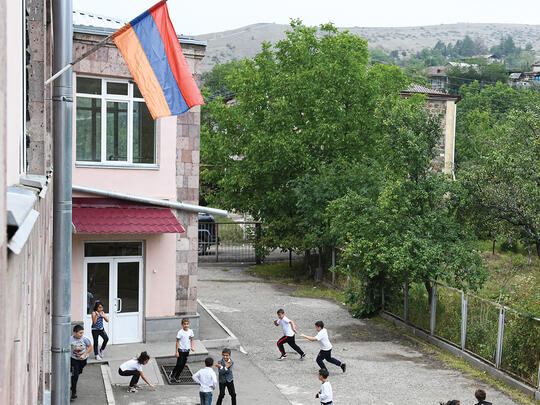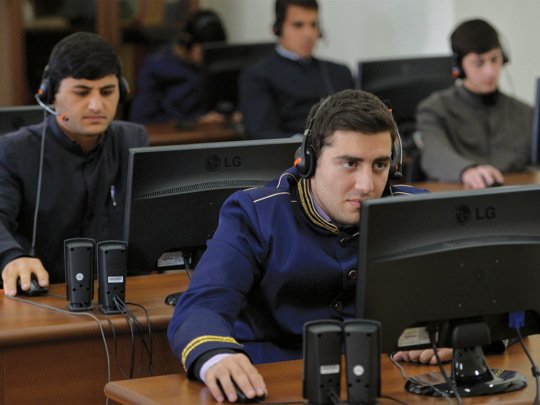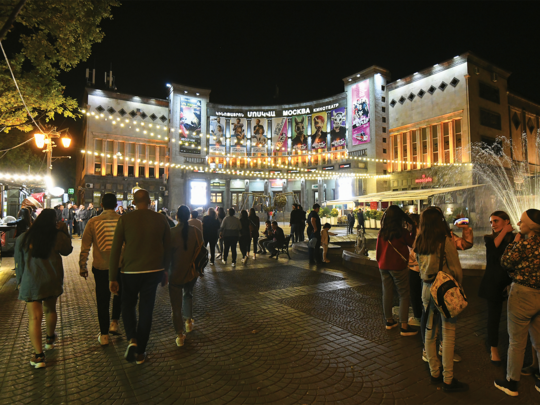It was the start of a new school year for Liana, a first grader from the obscure Armenian village of Kalavan, population 120, nestled in the province of Gegharkunik near Lake Sevan. Many of its inhabitants are from Sumgait, Azerbaijan who resettled here in the early 1990s after a deadly assault by Azeri forces effectively left the Armenians fleeing for their lives. Now, decades later, the town that was once a haven for those forced from their homes is experiencing a cruel reversal: families are choosing to leave for the chance of a better life. Such is the impact of the great emigration from Armenia’s regions, a phenomenon that has finally caught up with little Liana.
With fewer students, the school also lacks teachers. Thanks to the Teach for Armenia program, last year the school was finally able to have an English teacher
A random photo of her all alone in the classroom, surrounded by empty desks and chairs, went viral on social media. It was an eerie icon of the times, with the six year old as the poster child for the ever widening education gap between rural and urban Armenia.
It’s a pattern not unfamiliar on the provincial landscape, as rural communities are too sparse, financially hardpressed and underserved to maintain the quality of a basic public school education.
While the Kalavan school made a valiant effort to provide Liana with the same attention as students in other grades, such a scenario proved unsustainable. Now she has some company: two second-graders share the space and the teacher with her.
School principal Zvart Keshishyan reports that only 19 students are currently enrolled in the Kalavan school, which results in these composite classes. Currently, there are five grades that are doubled up; only the 9th and 11th grade classes are separate. The Kalavan school will have only one graduate at the end of the academic year.
Keshishyan raises another issue facing Kalavan and other struggling villages like it. “With fewer students, the school also lacks teachers. Thanks to the Teach for Armenia program, last year the school was finally able to have an English teacher. This was great news for both the school, the students, and their parents. But since 2007, we have been teaching foreign language for only two years, in this case, only French. Before that, the children were deprived of learning a foreign language because we couldn’t find a teacher. And we have so many similar problems. For example, since 2008, we have no chemistry teacher. We are actively appealing to specialists to apply, but there is no response and we are still waiting,” she explains. The lack of teachers in the rural areas means students miss out on a thorough education, graduating with incomplete knowledge and skill sets for their age and grade level. At this rate, it would be difficult for them to compete for jobs of the future.

The school in Kalavan also lacks reliable access to technology-enabled distance learning, as there are often problems connecting to the Internet. The school has received some school furniture, computers and printers, thanks to private donations. But unreliable connectivity is an impediment to remote learning without a modernized infrastructure.
Yet, according to Keshishyan, Liana is not aware of these irregularities and is doing well. Liana’s father Mher Aghajanyan describes his daughter as having “positive impressions from the first day of school,” also noting, “Liana enjoys going to school, already has new friends, and is happy with the lessons.”
What Liana and her father may have yet to realize is that the gap between the quality of education in regional Armenia and urban Armenia will continue to widen if emigration rates persist, the population doesn’t replenish itself, and there’s an insufficient presence of teachers. The question is whether Liana will have the skills to be competitive in the job market of the future and will the towns and villages of Armenia have the jobs and economic growth necessary to keep her and her family in Kalavan.
For all these looming questions, Keshishyan says there is still cause for optimism. “The number of births has increased in the village in recent years. For example, two years ago eight children were born in the village. We have young people who are going to marry soon. There are positive trends, so we are all optimistic about it,” she says.
Another positive sign is that recently Armenia’s Ministry of Education, Science, Culture and Sport decided to build 21 small regional schools in the new year and the design and budgets are already in the works. In August 2019, during a working consultation with Armenia’s Prime Minister Nikol Pashinyan, the minister Arayik Harutyunyan noted there was already a list of schools that would be built in different regions. In Pashinyan’s words, “That would be unprecedented work.”
The ministry also announced plans to create an environment for consistent connectivity so that distance learning can help compensate for the lack of teachers in the regions. To date, there are roughly 500 vacant positions in the regional school system, most notably in physics and chemistry.
In the meantime, Liana’s two younger brothers will soon be old enough to attend the school, with the prospect that government assistance and technology, combined with reduced emigration and higher birth rates, will ultimately level the educational playing field between town and country—ideally within a generation.


